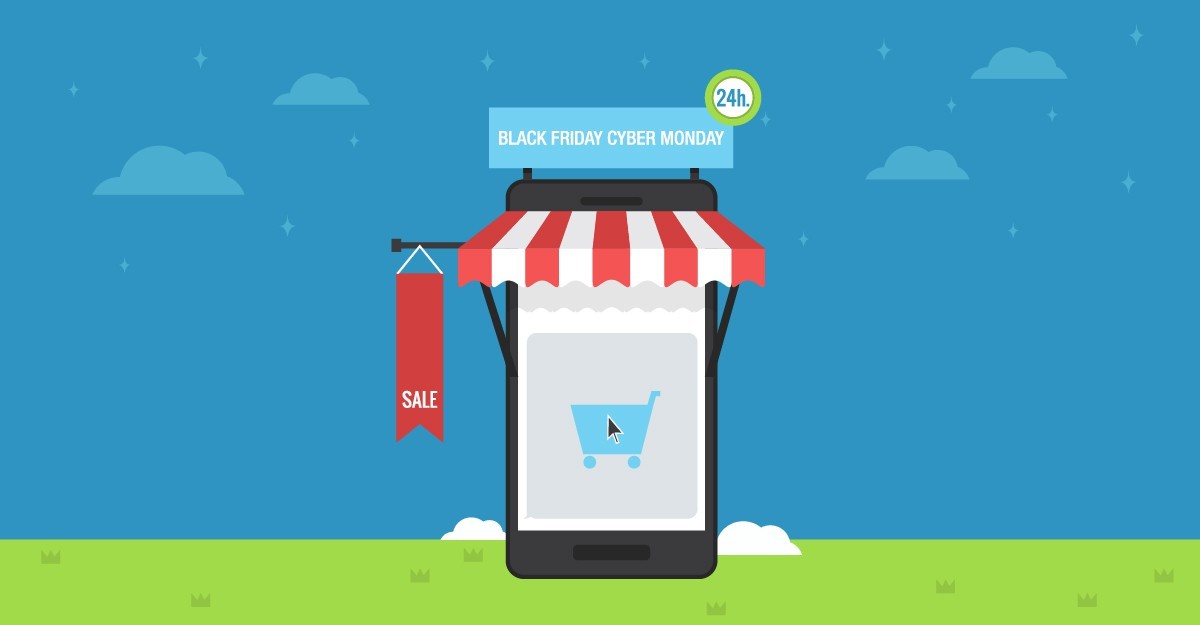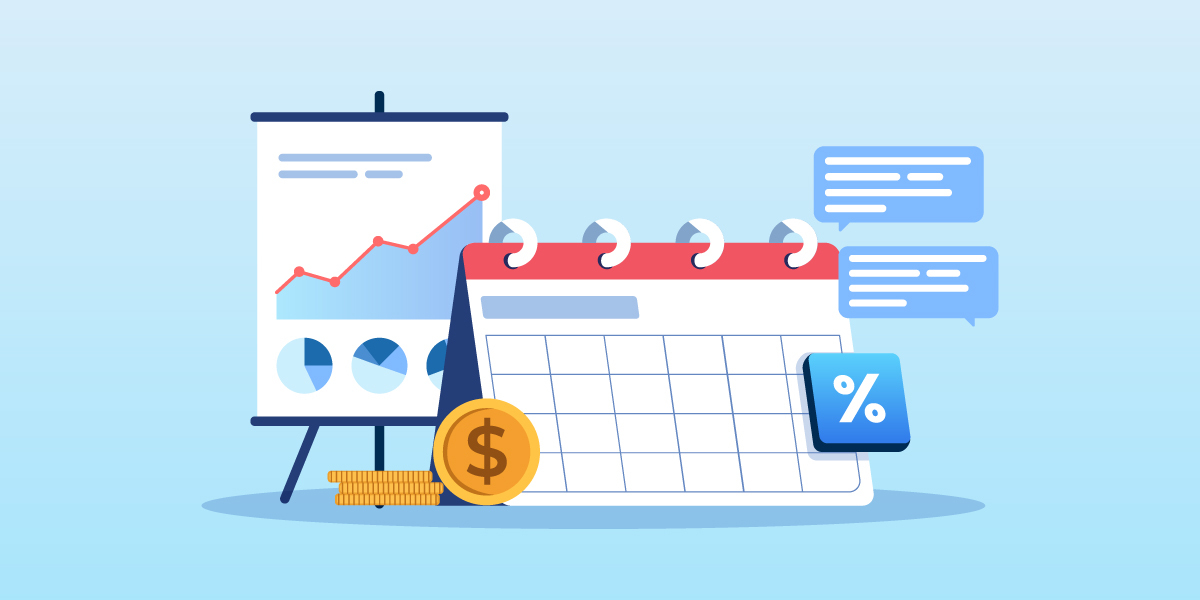BFCM Omnichannel Marketing Strategy Guide

It’s that time of year again with Black Friday and Cyber Monday promotions (BFCM), just around the corner. As a marketer, exploring omnichannel marketing strategy can ensure you get the reach and results you are after, by connecting with your customers where they are. According to Mckinsey, omnichannel shopping is on the rise with 60-70% of customers are researching and purchasing both instore and online across categories. Omnichannel marketing strategy can ensure a better customer experience and a unified approach to your marketing for your stores, apps, websites and marketing channels to engage with your audience.
BFCM has evolved far beyond e-commerce origins, now capturing the attention of marketers across various industries. In this guide, we’ll delve into why more marketers are investing resources in BFCM and provide a comprehensive roadmap to help you navigate this high-stakes season successfully.
Getting started on your omnichannel marketing strategy
As ecommerce and retail businesses adapt to changing consumer behaviour online and in store, an omnichannel approach ensures that you not only stay relevant but can achieve cut through with so many competitors in the market. An omnichannel strategy is not about being on as many channels as possible, but about creating an integrated customer experience. No matter if customers are browsing your website, visiting your store or engaging with your brand on social media there is a consistency across all channels with your brand experience.
To kickstart your omnichannel marketing strategy your business needs to:
Set your goals up front
The very first step is to be clear what you are trying to achieve, this may vary based on whether you are in B2B, B2C or retail, for example:
- Increased Sales
- New customer acquisitions
- Retaining existing customers from competitor offers
- Inventory management and stock clearance
- Reactive dormant customers
Understand your audience’s preferences and behaviours across channels
Consumers expect a consistent experience with your brand across digital channels and in store. To understand your audience’s preferences and behaviours better, leverage data analytics as your business can gain deeper insights into customer preferences, purchase history and buyer behaviour. This information is valuable to tailoring your marketing strategy. If you are crafting email and or SMS campaigns, you can tailor your message to ensure you are appealing to your audience. Whether it be recommending products based on their previous purchase history or interactions or sending personalised promotions, a holistic approach ensures that customers are engaged and guided throughout their purchasing journey. This can result in not only driving your sales but also can help build brand loyalty.
Select relevant channels with a focus of quality over quantity
When selecting your relevant channels as part of your omnichannel marketing strategy it is not about being everywhere but about being where it matters most for your audience. A good place to start is by evaluating channels that align with your target audience and product offering. It is better to invest your time and money in channels that resonate the most with your audience rather than spreading resources too thin by doing too much. Consider whether your audience is:
- Active on social media and which channels based on their age, gender and demographics?
- Do they respond well to email communications?
- Would SMS work well to reach them if they are mostly on their mobiles and on the go, accessing apps and websites?
It is better to excel in a few channels than to be present on many, quality content and engagement will deliver results.
Consistent Branding: Maintain a uniform brand identity for recognition and trust
Your brand is more than just a logo, it is about the consistency in messaging, interactions and how you communicate with your customers that reflects your brand. Every touch point can communicate a message as to what your brand stands for. Whether a shopper interacts with your brand in-store, on your website, through social media, or via SMS and email, they should experience a unified, familiar identity and experience.
Ensure that your visual brand guidelines in terms of your logo, colours and messaging with your tone of voice is consistent across all channels. As this will not only foster brand recognition from your audience but also builds trust and loyalty. This is important as customers are more likely to engage with a brand they not only recognise but trust and this leads to a sense of consistency and reliability which may lead to repeat purchases. When you maintain a brand identity for your business during the customer journey, you ensure your brand portrays authenticity and credibility which strengthens your marketing as you build loyalty.
AI and automation technologies provide efficient, personalised engagement
By utilising AI and automation you can make the process faster and more efficient to deliver a personalised customer experience. Technology today can help you analyse vast amounts of data, to understand your audience and their preferences. AI powered conversational SMS, chatbots and virtual assistants can automate responses with your customers by answering enquiries 24/7 and streamline resources. Personalisation in algorithms such as by using conversational AI and SMS can help recommend products, content, and offers that align with your customer’s interests and can boost conversion rates. During your buyer journey, automation can streamline your marketing by triggering messages, email or notifications at key moments.
Automation that drives responsiveness and personalisation not only elevates your customer experience but it also ensures better productivity and efficiency of your internal resources. By leveraging AI and automation, you can deliver the right message, to the right person at the right time and across the relevant channels ensuring you reach the goals of your omnichannel marketing strategy.
Ensure effortless customer journeys between channels
A shopper may discover your product on social media, browses your website, receives an SMS or email and then visits your store to make the purchase. The customer experience should be cohesive with information that aligns with every channel. Stock availability, pricing and promotions should be consistent whether a customer shops online via mobile or instore.
Regularly analyse, test and enhance your channel performance
Monitoring your channel performance, test, analyse and optimising ensures that your omnichannel marketing strategy is headed for success. As the digital landscape is evolving, what worked in the past may not work tomorrow. That’s why it is essential to assess the effectiveness of your channels.
Key performance metrics include conversion rates, customer engagement and ROI for each channel. Identify those channels that are delivering the best results for your audience and those that need optimising through A/B testing and customer feedback you can update your messaging and content to improve the customer experience. Stay up to date with trends and technology by embracing innovation and adapting your strategy to drive growth.
The 5 month planning guide for success:
August - Reflecting on Past Performance and Crafting Irresistible Offers
- Start planning your BFCM campaigns as early as possible.
- Ensure your strategy includes inventory allocation and offer redemption as well as the marketing efforts across channels.
- Create a content calendar outlining when and where you’ll promote BFCM deals.
- Take an integrated, omnichannel strategy approach – get the right mix of email, social media, paid advertising, and text (SMS).
- Leverage Data and Customer Insights from past performance and customer behaviour to inform your strategy.
- Segment your Audience based on their preferences, purchase history, demographics to create Persona’s and then tailor your messaging and offers accordingly.
- Get your logistics sorted – including organising an SMS short code (if required).
Before diving into BFCM preparations, take a moment to reflect on the previous year’s performance. What worked? What didn’t? Analyse where your competitors excelled. Additionally, draw insights from campaigns you’ve executed throughout the year. Can you incorporate successful elements into your BFCM strategy?
Now, build your test plan. Begin rolling out tests for your BFCM hypotheses, covering everything from messaging and media channels to offers and target personas. Research which platforms will best serve your advertising needs.
Don’t forget to consider logistics – do you need an SMS short code? If you anticipate a high volume of messages, branding is important, or you need advanced features like keywords and real-time engagement, a short code could be a valuable investment.
September - Building Your Audience for Maximum Impact
September is a critical month for preparing your BFCM marketing campaign. It’s the time to ensure you have the biggest audience possible to drive maximum impact. Tactics to leverage include:
- Run Paid Retargeting: Re-engage previous customers and site visitors to remind them of your upcoming BFCM offers.
- Push Notifications: Utilise push notifications to keep your audience informed and engaged.
- Grow Your Email and SMS Lists: Building these lists is crucial, but remember to follow text-specific rules, which can vary by country. Ensure you collect consent for both email and text in your forms. Make sign-up easy with progressive profiling techniques, and always start with collecting email addresses. Consider using popup teasers with engaging content to encourage sign-ups. Offer incentives like discounts or early access to BFCM deals to encourage subscribers to join both email and SMS lists.
October - Crafting the Perfect Promotion Strategy
As October rolls around, it’s time to finalise your promotion strategy:
- Create and Test Compelling Offers – stand out from the competition with discounts, bundles, free shipping, early access deals or limited time promotions.
- Drive a sense of urgency - encourage immediate action in your messaging, consider the use of countdowns, limited stock, and end dates to create FOMO (Fear of Missing Out).
- Optimise for Mobile and User Experience – always ensure that your digital assets are mobile friendly, and you have your website logistics in check to handle increased traffic (loading speed, navigation, and checkout process).
- Engage Across Multiple Channels - use omnichannel marketing to reach a broader audience. Coordinate your messaging and promotions across email, social media, SMS, paid advertising (and your physical stores if applicable).
- Integrate a social media strategy into your mix - leverage social media ads that target specific segments. Leverage personalised SMS and email, focusing on segmented audiences and automation for maximum impact (Don’t forget to re-engage past customers through retargeting campaigns, reminding them of your BFCM deals).
- Deals and Offers: Nail down your deals and offers for each target persona. Remember to apply exclusions to ensure each segment receives only relevant offers.
- Channel Strategy: Take an integrated approach to channel strategy. Make sure your brand is consistent across all channels but find ways to stand out. Personalise when it adds value but ensure accuracy. Leverage your Test and Learn results to determine the right communication mix:
- Email: Less intrusive and cost-effective but with reduced open and click-through rates.
- SMS: Ideal for time-sensitive and highly personalised messages, with better open and click-through rates than email. However, consider its potential intrusiveness and use it thoughtfully.
- MMS: works well for visually appealing content. It’s particularly effective for showcasing products, promotions and new launches through images or short videos. MMS can also be used for customer testimonials, interactive experiences and visual storytelling. Always ensure your MMS campaigns are concise and comply with regulations.
- Push Notifications: Perfect for driving app usage, providing helpful alerts, and automated communications.
- Organic and Referral Traffic: Start early and collaborate with partners to enhance offers and content.
- Paid Media: Attract new prospects by leveraging your testing and research, using platforms and creative tailored to your target personas.
10 Tips for SMS and MMS as part of your Omnichannel Promotions Strategy
- Compliance with SMS Regulations: Ensure that your SMS campaigns comply with relevant regulations, these vary from country to country so make sure you’re across SMS compliance in the markets you operate. A key component of compliance is obtaining proper consent from recipients before sending promotional messages.
- Permission-Based Marketing: Only send text messages to individuals who have explicitly opted in to receive them. Implement a clear and transparent opt-in process that explains what type of messages they can expect to receive. Consider using double opt in. The first op-in is when they enter their number and consent to communication via text. The second comes when they receive a text message from your business with your business name and phone number asking them to opt-in i.e. reply “YES” to your message to confirm that they want to receive your messages.
- SMS Opt-Out Options: Include opt-out instructions in every text message. Make it easy for recipients to unsubscribe if they no longer wish to receive messages from your brand.
- Plan your SMS Frequency and Timing: Be mindful of the frequency and timing of your text messages. Sending too many messages too frequently can annoy recipients and lead to opt-outs. Consider time zones and avoid sending late-night or early-morning messages.
- Value-Driven Content: Craft text and MMS messages that offer real value to recipients. Highlight exclusive BFCM deals, discounts, or early access offers that are relevant to their interests and needs. Use MMS to showcase products visually.
- Personalisation: Personalise your text messages whenever possible. Use recipient names and tailor offers based on their past purchase history or preferences
- Concise and Clear Messages: Keep text messages concise and to the point. Clearly convey the offer, expiration date, and any necessary instructions. Use clear and actionable language.
- Testing and Optimisation: Continuously test and optimise your SMS campaigns. Monitor open rates, click-through rates, and conversion rates. A/B testing can help you determine the most effective messaging strategies.
- Segmentation: Segment your SMS list based on customer behaviour, demographics, and preferences. Sending targeted messages to specific segments can increase relevance and engagement.
- Multi-Channel Integration: Integrate SMS marketing into your broader omnichannel marketing strategy. Ensure consistency in messaging and branding across SMS, email, social media, and other channels.
If you’re considering adding SMS and MMS to your omnichannel strategy, these tips will help your business get the best results. SMS and MMS is a highly direct and personal channel, so it’s crucial to respect recipients' preferences and privacy. Building a strong SMS marketing strategy for BFCM requires careful planning, compliance, and a focus on delivering value to your customers.
November - Campaign Optimisation for Peak Performance
As the BFCM season kicks into high gear, continuously optimise your campaigns.
Keep a close eye on your metrics, adjust your strategies as needed, and be prepared to pivot if necessary to maximise ROI. Monitor and analyse your campaign performance in real-time - adjust your strategy as needed including for emerging customer preferences as well as performance.
Remember that flexibility is key during Black Friday. Be prepared to adapt your strategy based on real-time data and customer feedback to maximise your campaign’s success.
December - Elevating the Post-Purchase Experience
Extend your campaign into December with post-purchase tactics:
- Gifting and Shipping Cut-Off Campaigns: Ensure customers know the last dates for guaranteed holiday delivery and offer post-holiday incentives.
- Enhance the Post-Purchase Experience: Surprise and delight customers with exceptional post-purchase service, fostering brand loyalty.
- Prepare for the New Year and Back-to-School/Work: Start conversations early to keep the momentum going into the new year, capitalizing on the holiday spirit.
Black Friday and Cyber Monday promotions offer a significant opportunity for marketers across industries. By following this guide and combining careful planning, data-driven decision-making, compelling offers, a seamless user experience, and a multi-channel approach, you can position your brand for success during Black Friday and Cyber Monday.

Tori heads up Marketing at Known leveraging her passion for fostering data and technology to deliver growth. Ranked as one of the top 50 CMOs in Australia, she has over 20 years of experience across Sales, Marketing and Operations where she has served in senior roles in some of Australia's largest Marketers. Tori has built a reputation in the tech space as the Chief Marketing Officer at Ricoh, Marketing Director at VMware and Telstra. She holds several advisory positions including WYDA education and Women in Al.


